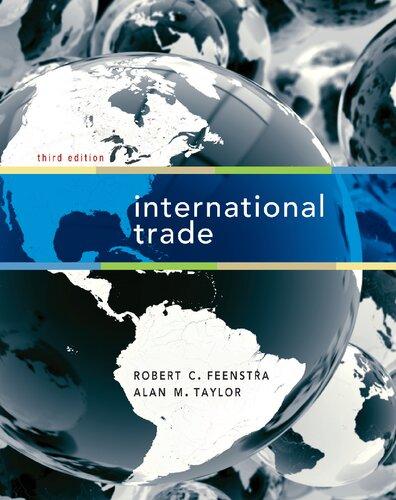4. Consider the model of a firm that produces final goods using R&D and components as inputs,...
Question:
4. Consider the model of a firm that produces final goods using R&D and components as inputs, with cost data as follows: Components: Total costs of production = PC • QC = 100 Earnings of high-skilled labor = WH • HC = 10 Earnings of low-skilled labor = WL • LC = 40 Earnings of capital = R • KC = 50 Share of total costs paid to highskilled labor = 10/100 = 10% Share of total costs paid to lowskilled labor = 40/100 = 40% R&D: Total costs of R&D = PR • QR = 100 Earnings of high-skilled labor = WH • HR = 40 Earnings of low-skilled labor = WL • LR = 10 Earnings of capital = R • KR = 50 Share of total costs paid to highskilled labor = 40/100 = 40% Share of total costs paid to lowskilled labor = 10/100 = 10%
a. In which factor(s) is components intensive? In which factor(s) is R&D intensive?
b. Suppose that due to the opening of trade, the price of components fall by DPC/PC = −10%, while the price of R&D remains unchanged, DPR/PR = 0. Using the hint below, calculate the change in the wage of skilled and low-skilled labor. Hint: We follow a procedure similar to that used in Chapter 4 when calculating the change in factor prices in the Heckscher-Ohlin model. First, write the total costs in each activity as consisting of the payments to labor and capital: PC • QC = R • KC + WH • HC + WL • LC, for components PR • QR = R • KR + WH • HR + WL • LR, for R&D Because we assume that 50% of costs in either components or R&D is always paid to capital, then R • KC = 0.5(PC • QC) and R • KR = 0.5(PR • QR), so we can rewrite the above two equations as 0.5(PC • QC) = WH • HC + WL • LC, for components 0.5(PR • QR) = WH • HR + WL • LR, for R&D Taking the change in these equations: 0.5(DPC • QC) = DWH • HC + DWL • LC, for components 0.5(DPR • QR) = DWH • HR + DWL • LR, for R&D Dividing the equations by (DPC • QC) and (DPR • QR), respectively, we can rewrite the equations as 0.5 DPC PC = DWH WH WH • HC PC • QC + DWL WL WL • LC PC • QC , for components 0.5 DPR PR = DWH WH WH • HR PR • QR + DWL WL WL • LR PR • QR , for R&D Use the cost shares and price change data in these formulas to get -5% = DWH WH 10 100 + DWL WL 40 100 , for components 0 = DWH WH 40 100 + DWL WL 10 100 , for R&D Now solve these two equations for the change in the high-skilled wage (DWH/WH), and the change in the low-skilled wage (DWL/WL).
c. What has happened to the relative wage of high-skilled/low-skilled labor? Does this match the predictions of the offshoring model in this chapter?
Step by Step Answer:







